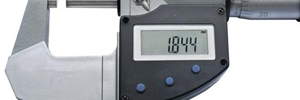A Quick Overview Of Resistors
 The most common types of resistors that people associate the word ‘resistor’ with is usually the carbon version, this is normally a component that has metallic ends connected to a carbon tube wrapped in a ceramic insulating tube. This is known as a ‘fixed’ resistor, meaning that it is a component with a fixed resistance. The resistance values are pretty much uniformly placed onto the tube so you can read the values of the resistor if you are familiar with the resistor colour chart. There is also another type known as a variable resistor, this is self explanatory. There is a wide range of theses electronic components made for all different uses.
The most common types of resistors that people associate the word ‘resistor’ with is usually the carbon version, this is normally a component that has metallic ends connected to a carbon tube wrapped in a ceramic insulating tube. This is known as a ‘fixed’ resistor, meaning that it is a component with a fixed resistance. The resistance values are pretty much uniformly placed onto the tube so you can read the values of the resistor if you are familiar with the resistor colour chart. There is also another type known as a variable resistor, this is self explanatory. There is a wide range of theses electronic components made for all different uses.
Properties Of Resistors
The main parameter of a resistor is it’s resistance value, this is it’s ability to oppose the flow of electrical current in a circuit. Resistances are manufactured to a set standard using ohms, with tolerances added in so the resistor can fluctuate from the stated value, but not by much. As an example; 220 Ω x 10% = 22 Ω, this is a usual tolerance value but can be different depending on the resistor and the job it is required to perform. There can be a few different properties to the resistor that can make it useful in different situations, rather than it just being a single use component. These ‘behaviours’ can include noise, such a resistor, known as high gain, could be used in amps where the noise should be kept to a minimum.
Applications In Industries
Due to the wide range of resistors available, there is a massive range of applications for these genius little components. A new increase in LED headlamps has become the norm for most new cars, there you will find that most of these will have a wire wound nested in there to act as part of thermal dissipation. Multi meters, however complicated they can get for the bench or field engineer, will always have a resistor in there doing it’s job or protecting the meter from the circuit. Dividing voltage, fail safes to protect components from damage. There is literally thousands of uses for this component.
